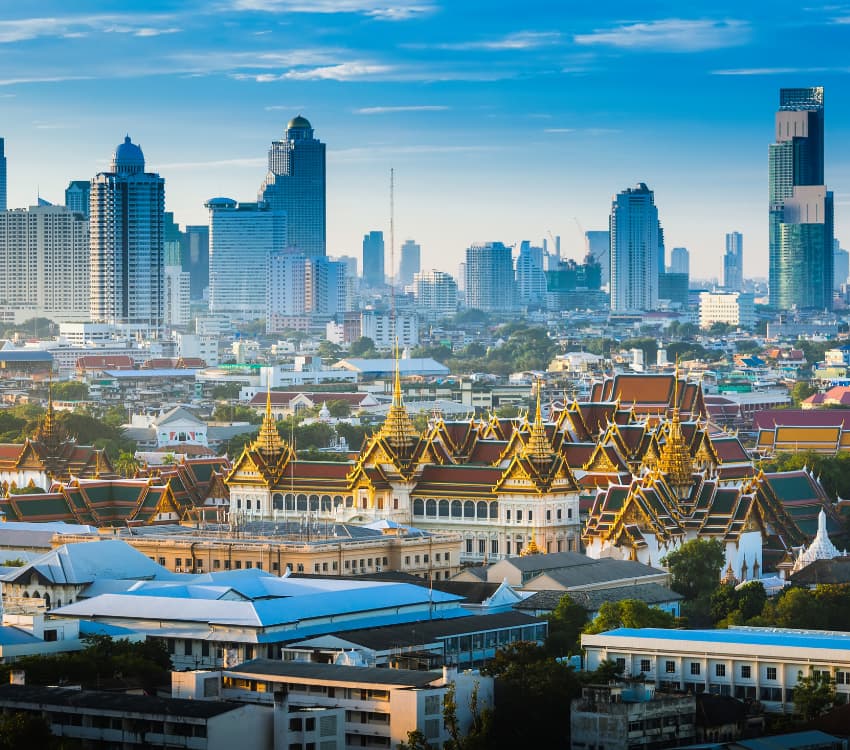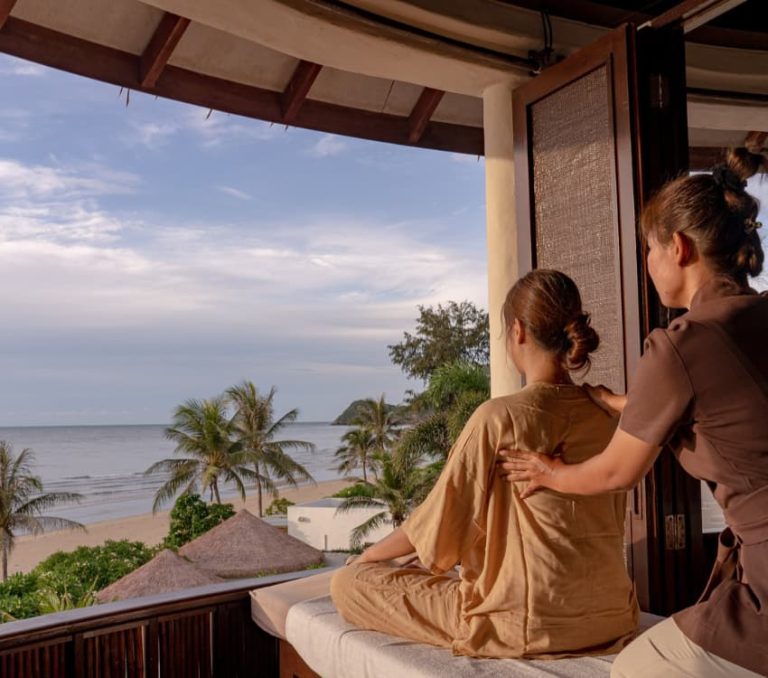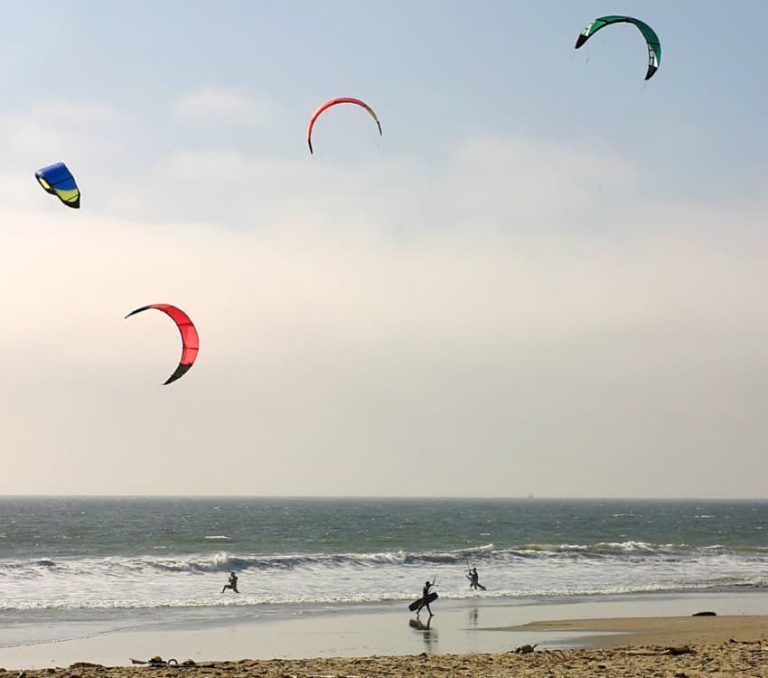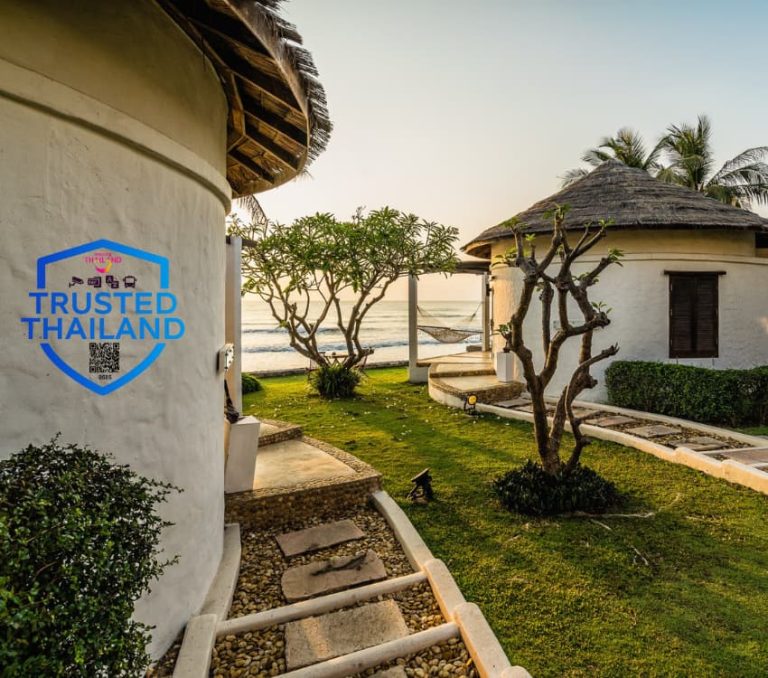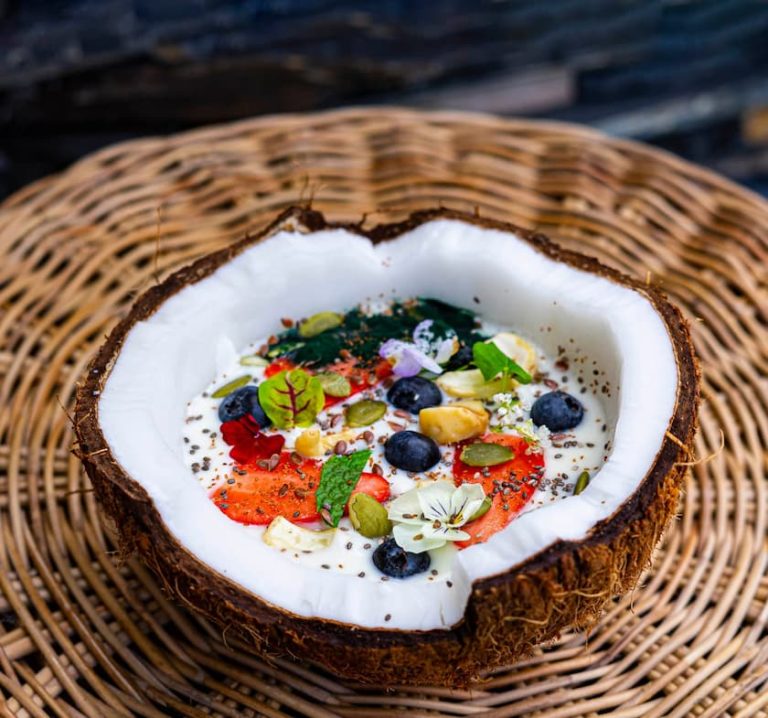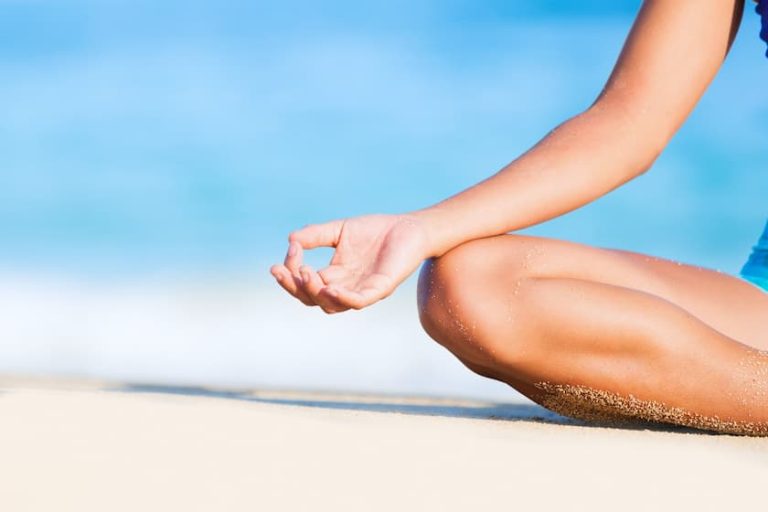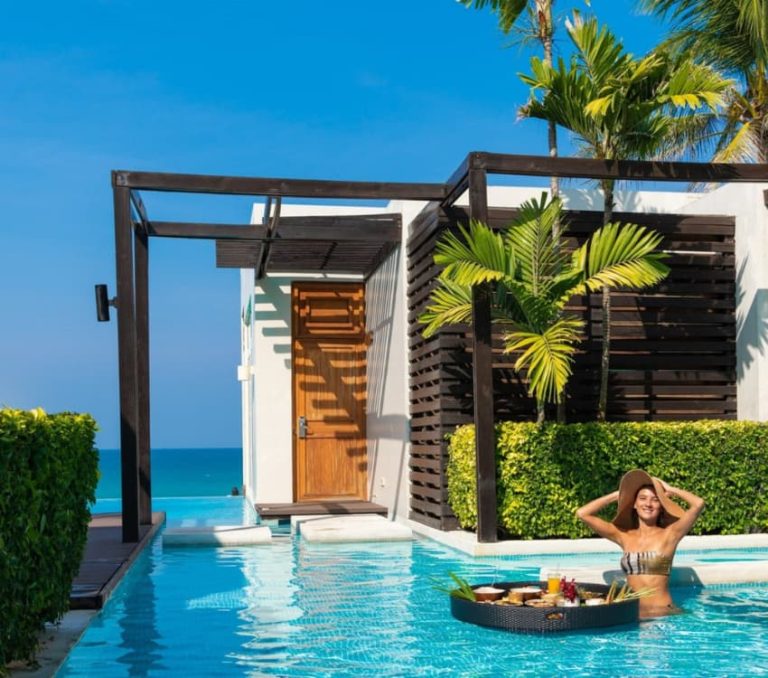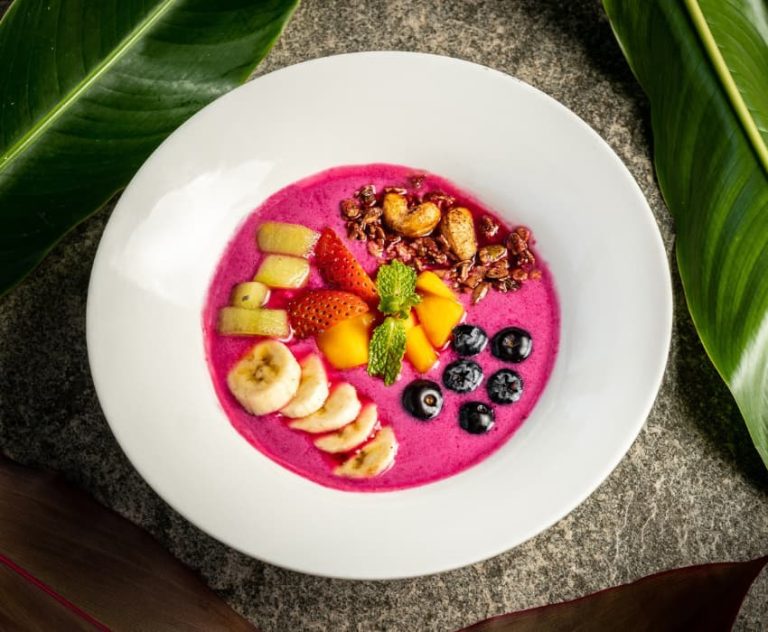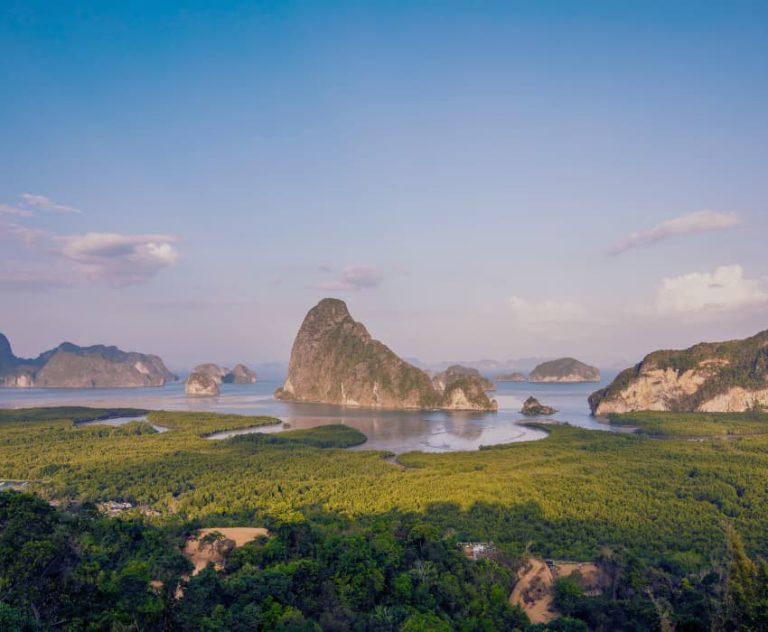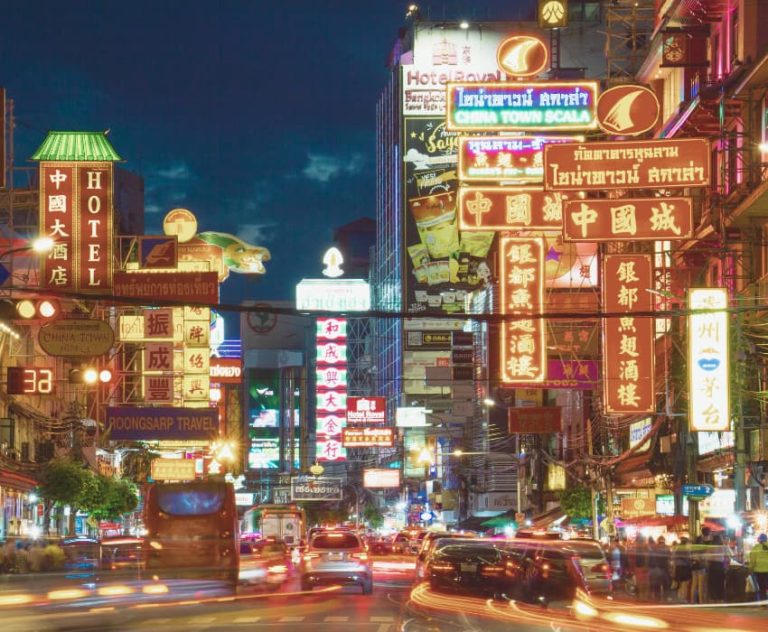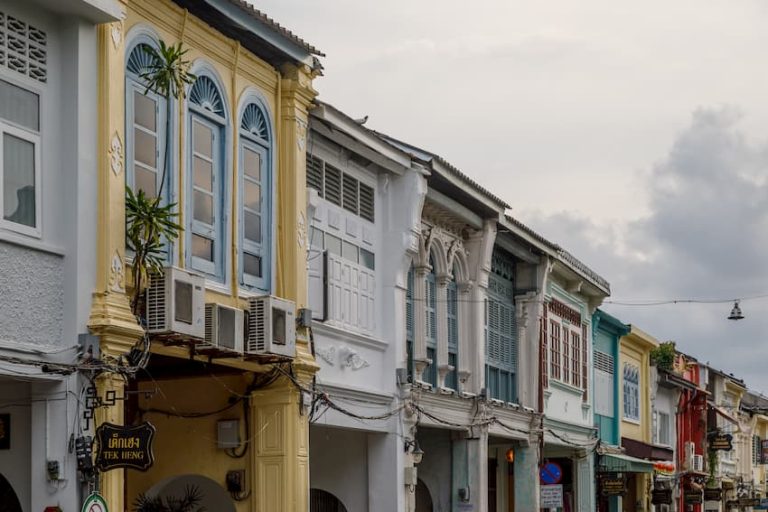Bangkok is a city of striking contrasts. It combines the shimmering skyline of modern towers with elegant remnants of the past. Every street carries a sense of history, where temples, mansions, and palaces coexist with lively markets and glittering hotels. Beneath the vibrant surface lies a remarkable architectural heritage that reflects centuries of diplomacy, artistry, and devotion.
During the late nineteenth and early twentieth centuries, Bangkok welcomed architects and artists from Europe. They brought ideas from Venice, Paris, London, and Rome, blending them with Thai traditions of symmetry and spirituality. The result is a city filled with neoclassical elegance, graceful wooden houses, and ornate palaces.
Neighbourhoods such as Silom, Bang Rak, and Rattanakosin Island still showcase this cultural fusion. Each building tells a story of craftsmanship and progress. For travellers staying at our boutique Bangkok hotel, these remarkable sites are within easy reach. The hotel’s boutique design reflects a similar philosophy of harmony between heritage and modernity.
The Beauty of Bangkok’s Old Buildings
The city’s architectural journey flourished during the reign of King Rama V, a visionary monarch who encouraged modernisation while honouring Thai identity. European influences inspired new civic buildings, cathedrals, and royal residences. Yet each design retained a Thai heart, balancing foreign styles with local materials and symbolism.
Exploring these old structures is like reading a living history book. Many have been lovingly restored and repurposed as museums, restaurants, and cultural spaces. Others remain untouched, their weathered façades quietly recalling the splendour of a city once known as the Venice of the East.
The East Asiatic Company
Danish Trade Legacy on the River
Along the Chao Phraya River stands one of Bangkok’s most beautiful colonial buildings, the East Asiatic Company. Constructed in the early 1900s, it reflects the vision of Captain Hans Niels Andersen, a Danish sailor and entrepreneur.
Andersen purchased the Mandarin Oriental Hotel in 1881 and later established the East Asiatic Company to connect Thailand with Europe through maritime trade. The Venetian-style architecture features graceful arches, decorative pillars, and intricate details that speak of wealth and global ambition.
Although its purpose has changed, the building’s façade remains one of the most photographed along the river. Visitors often pause by the Oriental Pier to admire the craftsmanship and the company’s insignia, still visible on the gable after more than a century.
The Old Customs House
Gateway to Siam
The Old Customs House is another remarkable example of Bangkok’s colonial heritage. Commissioned by King Rama V in the late nineteenth century, it was designed by Italian architect Joachim Grassi.
The building once served as the first stop for merchants entering Siam by river. Its symmetrical Palladian design, tall windows, and clock tower reflect the grandeur of the period. Facing the Chao Phraya River, it symbolised openness to international trade and cultural exchange.
Although the customs offices moved elsewhere decades ago, the building still retains its proud charm. Its weathered walls and arched doorways now appear in films and fashion photography. Located in the Creative District, it stands as a poignant reminder of Bangkok’s maritime past and its transformation into a modern city.
The Assumption Cathedral
European Grandeur in the Tropics
Just a short walk from the river lies the Assumption Cathedral, a cornerstone of Bangkok’s Catholic heritage. The first Christian community in Siam dates back to the sixteenth century, but this cathedral became its true heart.
Completed in 1821 and expanded in 1909, it was designed in a Romanesque style that evokes European cathedrals while adapting to Bangkok’s tropical light. Its red brick façade, arched windows, and stained glass interiors create a peaceful contrast to the bustling streets outside.
The cathedral remains active today, hosting services in both Thai and English. Visitors often comment on its atmosphere of quiet grace. It is one of the most elegant examples of Western architecture integrated into the spiritual life of Thailand.
The Ministry of Defence
The Golden Facade of Power
Facing the Grand Palace is the Ministry of Defence, an impressive neoclassical structure that gleams beneath the Bangkok sun. King Rama V ordered its construction in 1887 to establish a permanent command centre for the military.
Once a stable for royal elephants and horses, the building was transformed into a masterpiece of symmetry and proportion. Its golden walls, green shutters, and arched colonnades reflect both authority and refinement.
The building is still in use, and though access is limited, photography from the street is encouraged. The Ministry’s well-preserved façade stands as a fine example of nineteenth-century civic architecture and remains one of the most recognisable government buildings in the capital.
The House on Sathorn
Colonial Elegance Reimagined
In the Sathorn district, the House on Sathorn combines history with modern luxury. Built in 1889 for Lord Sathorn after the completion of the Sathorn Canal, it was once among Bangkok’s most fashionable addresses.
Over time, it became a hotel and later served as the embassy of the Russian Federation. Today, it forms part of the W Bangkok Hotel, housing one of Asia’s most celebrated restaurants.
The building’s colonial charm endures through its high ceilings, decorative balconies, and carefully restored pastel tones. Surrounded by gardens and courtyards, it offers a tranquil contrast to the energy of central Bangkok. It represents how heritage can be thoughtfully adapted for contemporary hospitality.
The Grand Palace
The Spiritual and Political Heart
No discussion of Bangkok’s old buildings would be complete without the Grand Palace, the most famous landmark in the city. Built in 1782, it served as the royal residence and administrative centre of Siam for over 150 years.
The architecture combines Thai artistry with European inspiration, resulting in gilded roofs, marble halls, and finely painted murals. Inside the palace grounds lies Wat Phra Kaew, the Temple of the Emerald Buddha, which remains the most sacred religious site in the country.
The Grand Palace reflects the spirit of Thailand itself. Its intricate designs celebrate craftsmanship, while its scale demonstrates the ambition and devotion of the Thai people. Walking through its courtyards is like stepping into the nation’s living heritage.
Rattanakosin Island
The Historic Heart of Bangkok
Rattanakosin Island is often described as Bangkok’s birthplace. Surrounded by canals and the Chao Phraya River, this area became the centre of royal and religious life under King Rama I.
Visitors can explore grand temples, elegant civic buildings, and traditional shophouses, all within walking distance. The National Museum, Wat Pho, and the Giant Swing are among the highlights.
The area’s charm lies in its authenticity. Unlike other parts of the city, Rattanakosin has resisted modern skyscrapers and shopping complexes. Its narrow streets, river views, and peaceful courtyards invite leisurely exploration. It remains one of the most atmospheric districts in Bangkok.
Suan Pakkad Palace
A Prince’s Artistic Legacy
Tucked away near Phaya Thai Road, Suan Pakkad Palace was once the private residence of Prince Paribatra, a grandson of King Rama V. The name means “Cabbage Garden Palace”, recalling the area’s agricultural origins.
The complex features eight traditional teak houses connected by raised walkways. Each house displays treasures from the prince’s personal collection, including ceramics, paintings, musical instruments, and artefacts from the Ban Chiang archaeological site, one of the oldest civilisations in Southeast Asia.
Visitors are drawn to the palace’s sense of serenity and craftsmanship. It offers a glimpse into both royal life and the evolution of Thai art and culture.
Bangkok’s Chinatown
Living Heritage and Shophouse Charm
The district of Chinatown, or Yaowarat, is one of Bangkok’s oldest neighbourhoods. Its labyrinth of lanes and alleyways reveals a blend of Chinese, Thai, and colonial architecture.
Here, traditional shophouses line the streets, their colourful facades and carved balconies creating a vibrant streetscape. Landmarks such as Wat Traimit, with its five-tonne golden Buddha, and Wat Mangkon Kalawat, the city’s busiest Chinese temple, illustrate the area’s deep spiritual roots.
Markets spill onto the pavements with vendors selling silk, gold, herbs, and spices. Many visitors come for the food, while photographers love the timeless aesthetic of the old buildings. Chinatown remains a living piece of Bangkok’s multicultural history.
Wat Pho
Classical Grandeur and Sacred Design
Wat Pho is Bangkok’s oldest and largest temple, and one of its most admired. Rebuilt under King Rama I, it covers a vast complex filled with sculptures, murals, and the celebrated Reclining Buddha.
The statue measures forty-six metres in length and fifteen metres in height. Its feet are decorated with symbols of enlightenment in mother-of-pearl, representing the journey of the Buddha’s spirit.
Beyond its visual splendour, Wat Pho is home to Thailand’s most respected school of traditional massage. Visitors often stay to experience a treatment rooted in centuries of healing tradition. The temple remains both a sanctuary of art and a living centre of knowledge.
M.R. Kukrit’s House
A Statesman’s Oasis
M.R. Kukrit’s House offers an intimate insight into Thai culture and design. This tranquil museum was once home to M.R. Kukrit Pramoj, an author, artist, and former Prime Minister.
The residence consists of five traditional Ayutthaya-style houses surrounded by gardens and lotus ponds. Each building is filled with personal artefacts, books, and artworks. The open-plan design allows gentle breezes to move through the teak interiors, creating a sense of calm and harmony.
For visitors, it is a reminder of how traditional Thai architecture blends beauty with practicality. The house preserves the personality of its owner while reflecting the nation’s artistic soul.
Vimanmek Mansion
The Golden Teak Treasure
Located in the Dusit district, Vimanmek Mansion is a magnificent structure built entirely from golden teakwood. King Rama V commissioned it in 1900, combining Thai elegance with Victorian influence.
Inside, each room tells a story of royal life and innovation. Visitors can view photographs, musical instruments, handcrafted furniture, and personal items from the King’s collection.
The mansion’s design is graceful and symmetrical, surrounded by gardens and fountains that create a sense of peace. It is not only an architectural marvel but also a window into the early modern history of Thailand.
The Jim Thompson House
A Legacy in Teak
The Jim Thompson House stands as a symbol of preservation and artistry. Jim Thompson, an American architect and entrepreneur, revitalised the Thai silk industry in the mid-twentieth century.
His home, built from six traditional teak houses, showcases the beauty of Thai design. Surrounded by tropical gardens, the museum displays Asian art, antique furniture, and intricate fabrics.
Jim Thompson’s mysterious disappearance in 1967 adds an element of intrigue, but his legacy endures through this elegant house. Visitors leave with an appreciation for craftsmanship and a sense of calm that reflects traditional Thai living.
Additional Hidden Architectural Gems
Beyond the famous landmarks, Bangkok is filled with smaller yet equally captivating buildings that preserve the city’s character.
- Bangkok Railway Station (Hua Lamphong): Designed by Italian architect Mario Tamagno in the early twentieth century, this terminal is an icon of neoclassical design.
- Neilson Hays Library: A serene neoclassical library founded in 1922, readers and architecture enthusiasts love it.
- Bang Khun Phrom Palace: Once a royal residence, this beautiful structure now houses the Bank of Thailand Museum.
Each of these sites contributes to the story of Bangkok’s evolution, linking the city’s artistic past to its creative present.
Exploring Old Bangkok from akyra Bangkok 11
For travellers eager to discover the historic side of Bangkok, akyra Bangkok 11 offers the perfect starting point. Situated on Sukhumvit Soi 11, the hotel blends contemporary design with an appreciation for heritage.
Guests can reach the old quarters via the BTS Skytrain or MRT Phetchaburi in just a few stops. After a day spent exploring palaces, cathedrals, and teak mansions, returning to the hotel provides a peaceful balance of energy and tranquillity.
With its restful interiors, personalised service, and serene canal-side setting, akyra Bangkok 11 invites guests to experience modern luxury inspired by the timeless beauty of the city around it.
Preserving the Past, Inspiring the Present
Bangkok’s old buildings are living pieces of history. They reflect resilience, artistry, and the open spirit of a nation that has embraced change while protecting its traditions. From colonial façades beside the river to golden teak mansions in the royal district, each one tells a story of creativity and cultural exchange.
As restoration projects continue throughout the city, these landmarks stand as reminders that progress and preservation can coexist beautifully.
Related Articles
- Hidden Gems in Bangkok
- A Bangkok City Break
- Exploring Bangkok’s Temples
- Bangkok’s Trendiest Neighbourhoods
- Four Day Bangkok Itinerary
Prefer an AI Summary?
The akyra Bangkok 11
65 Soi Sukhumvit 11,
Khlong Toei Nuea, Watthana,
Bangkok 10110, Thailand
T: +66 2 853 9225

